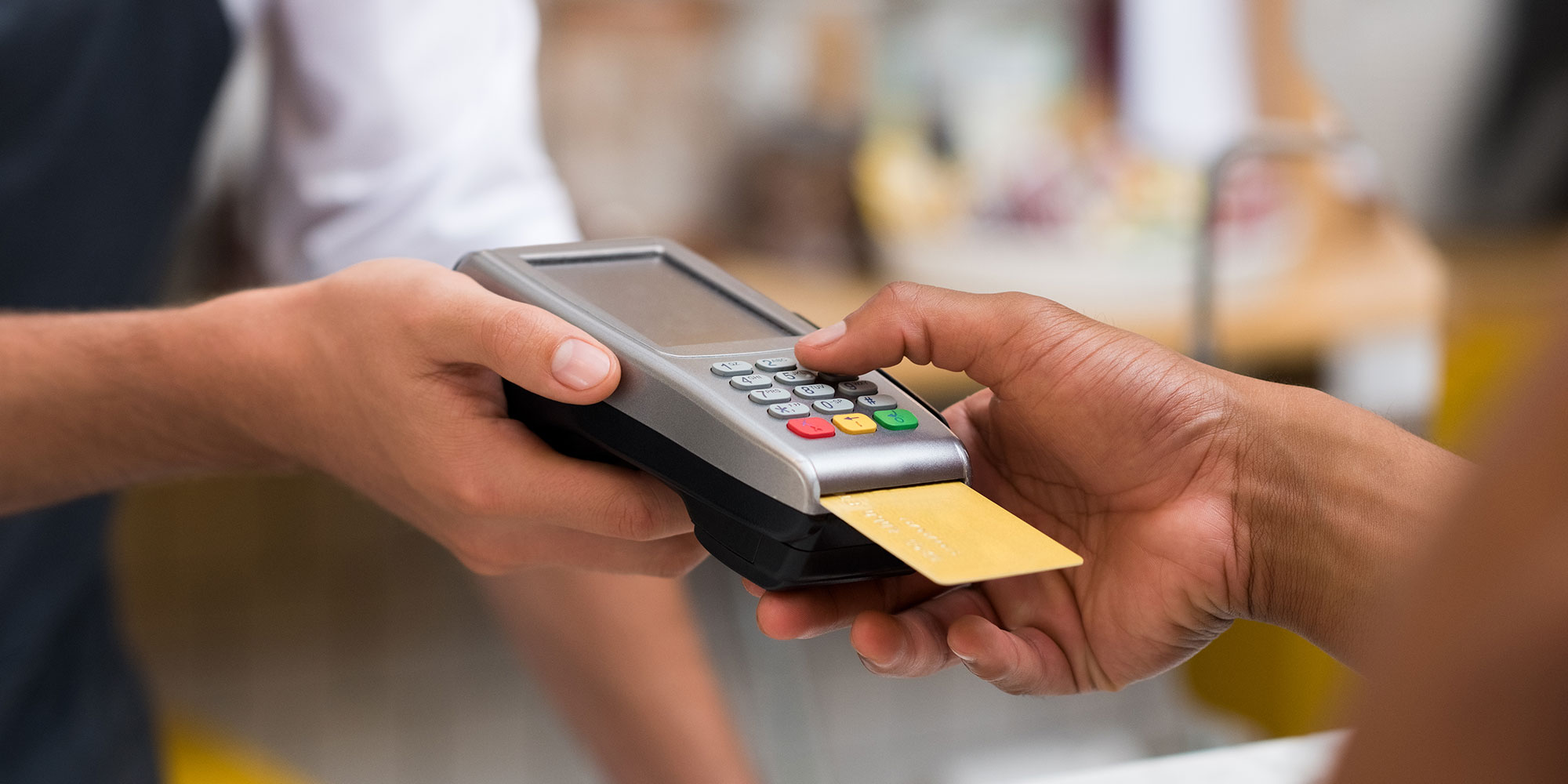Whenever you use your credit cards or debit cards, you should be aware of the potential risks and know how to avoid them. Online scams are common and if you’re not careful, someone could steal your personal information and your money if you don’t take the steps necessary to protect yourself.
Our mission at Leader’s Credit Union is to provide our members with the financial tools and information they need to power their passions–and that includes helping them learn how to avoid fraud with credit and debit card protection tips. Here are 13 tips to help you with credit and debit card fraud prevention.
How Can I Manage My Card Online?
The first thing you need to do is manage your cards online. That means using secure online banking and mobile banking security to minimize your risks and identify fraudulent activity quickly. You can take advantage of mobile and online security features to protect yourself.
Every credit and debit card comes with online management options. We’ll review specific tips in the next section, but it’s important to create an account, so you can monitor your account activity and keep an eye out for fraudulent transactions.
When you have easy access to your account at any time, it becomes a lot more difficult for a scam to go unnoticed, and the same is true of the security features that play a key role in secure banking.
13 Tips to Protect Yourself from Credit Card and Debit Card Fraud
The good news is that there are many things you can do to protect yourself from credit or debit card fraud. These 13 preventive measures are all within your control and doing them will minimize the risks of your card being used without permission.
#1: Set Up Your Account Immediately
When you get a new credit card, set up your online account immediately. Make sure to use a secure password that includes a combination of upper and lower case letters, numbers, and special characters for the maximum protection.
At this time, you should also opt into whatever security features your credit card issuer offers. We’ve included these in the tips below, but they include two-factor authentication and push notifications, and the option to temporarily freeze your card.
#2: Enable Two-Factor Authentication
Two-factor authentication adds an extra layer of security when you’re accessing your credit card account online. Every financial institution and credit card issuer offers this option, which requires either a biometric scan such as a fingerprint or face scan, or entry of a one-time texted code, to access your account.
We strongly recommend enabling two-factor authentication for any account that might give a scammer access to your personal information or allow them to make fraudulent charges. It takes just a few minutes to set up and it will help to keep your money safe.
#3: Enable Push Notifications
Push notifications are another optional security option that we recommend you take advantage of. When there’s activity on your account, you’ll get a pop-up notification on your computer or a mobile notification on your phone.
The benefit of signing up for push notifications is that you’ll know immediately any time there’s activity on your account. In the event someone unauthorized gets access to your card, you’ll be able to act right away to cancel the card, notify your financial institution, and protect yourself.
#4: Access Your Account Only on Secured, Private Networks
One of the best ways to protect your credit or debit card is to access your account only when you’re in a secure location and on a secure network. That means you should never use a public or unsecured network because there’s a risk that someone could steal your credit card information.
If you must access your credit card account when you’re in public, turn off your wi-fi and use mobile data instead. That way, you won’t be opening yourself up to the risk that someone else on a public network can steal your information.
#5: Take Advantage of Card Controls
Most banks or credit unions have an app, or a feature in their app, where you can lock your card if something were to happen. You can simply turn it on or off with the touch of a button. If you suspect fraud on your card or if you want to prevent it in certain circumstances, such as traveling, you can just turn it off.
Leaders has a Card Controls App that you can download and access anytime, anywhere on your mobile device.
#6: Review Your Account Information Frequently
In the days before online and mobile banking were available, credit card users got a complete statement of their account activity once a month. Today, you can access your account at any time–and that’s something you should do, because it gives you the best chance of identifying unauthorized charges early.
If you do spot a fraudulent charge on your account, you should notify the card issuer and your financial institution right away. You’ll be able to cancel your card and take advantage of consumer protection that will limit your losses for fraudulent charges to a maximum of $50.
#7: Keep Your Receipts
Any time you use your credit or debit card, you should keep your receipts to make sure you know what you spent and where you spent it. That way, if you’re unsure about a charge on your card, you can check it against your receipts.
It’s important to note that some charges may appear under a corporate name instead of a retail or website name. Checking the dollar amount can help you identify authorized and unauthorized charges.
#8: Use a Mobile Wallet for Online Purchases
Mobile wallets offer an additional layer of security when you use your credit or debit card online or at a retail point of sale. Each transaction is encrypted with a one-time code. The recipient of your payment won’t receive your credit card number and won’t be able to store it.
In the event a retailer’s data is stolen, using a mobile wallet means that your card won’t be compromised. Nobody will be able to use your credit card to make unauthorized purchases or cash advances.
#9: Use Virtual Credit Card Numbers
Virtual credit card numbers offer the same protections as mobile wallets but they do require a little bit more work. With a mobile wallet, the encryption all happens behind the scenes and automatically with no effort from you.
Some financial institutions offer the option to use a virtual credit card number when you shop online. They’ll display a pop-up window that will ask if you want a virtual number. When you click Yes, the virtual number will be generated and used for that purchase.
#10: Learn How to Spot Card Skimmers
Card skimming poses a significant security risk and may be an issue at ATMs and point-of-sale locations including retail card readers. One of the best things you can do to protect your card is to learn how to spot skimmers.
A card skimmer may be inside or placed over a card reader. External skimmers are easy to spot. Look for card reader covers or keypads that don’t align with the machine or don’t match its appearance. You should also look for hidden cameras aimed at the keyboard, which are there to record PINs.
#11: Shop Only on Secure Websites
There are a lot of scammers who set up fake online shopping websites to collect debit and credit card information. These scam websites may look authentic but they’re designed to fool shoppers into entering their card information, so their cards can be spoofed and used to make purchases.
You’ll need to pay attention to the URL of any website you visit and make sure it’s a legitimate website before you enter your card information. If you use Google Chrome, make sure the URL has a lock icon in front of it in the search bar, a sign that the site has an active security certificate.
#12: If You Lose Your Card, Report It Immediately
If you lose your debit or credit card, you should report it to the card issuer and/or your financial institution as soon as you realize the card is missing. Many financial institutions offer the option to freeze your card temporarily using their mobile app, and that’s a good option if you think your card may simply have been misplaced.
There are two main benefits to immediate reporting. The first is that you won’t be liable for any charges made after you report the card missing. The second is that it will prevent the person who stole your card from using it again.
#13: Inform the Correct People of Fraud on Your Cards
You’ll need to report any unauthorized or fraudulent charges to the proper authorities as soon as you spot them. The people to inform include the following:
- The card issuer
- Your financial institution
- The three main credit bureaus (Equifax, Experian, and TransUnion)
- The local police
- The Federal Trade Commission
Reporting to the FTC is essential if you believe you’ve been the victim of identity theft. They’ll be in the best position to catch the person responsible.
Protect Your Card with Leaders Credit Union
Protecting your credit and debit cards shouldn’t be difficult. The 13 card protection tips we’ve listed here will help you keep your cards secure and minimize the risks that you’ll be responsible for unauthorized charges. You can also check out Leaders Card Controls App that will add an extra layer of protection for your credit or debit cards.
Are you looking for a financial institution that cares as much about your financial security and goals as you do? Leaders Credit Union is here to help! We created “the Ultimate Fraud Prevention Help Kit” to ensure you’re equipped with all the knowledge and resources needed to help you stay one step ahead of fraudsters.
Report Scams to the FTC
If you were scammed or think you saw a scam, report it to the Federal Trade Commission.








